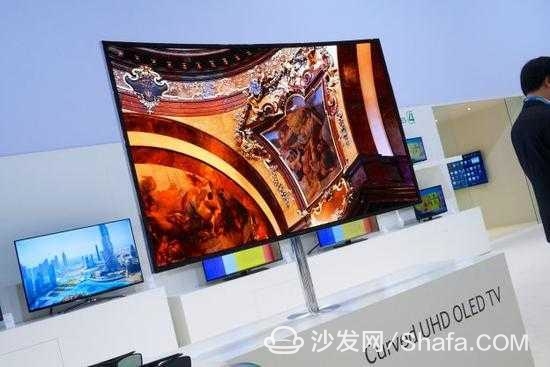Research Institute IHS pointed out that the cost of organic light-emitting diode (OLED) panels for mobile phones has been gradually reduced and they are close to the liquid crystal display panel (LCD). However, the cost of OLED panels for television use has fallen, but it is still difficult to get close to LCD TV panels. 
IHS indicated in the invitation document for the China Display and Materials Seminar that regardless of mainstream or entry-level high-end smart phones, the proportion of OLED panels used is increasing, and the penetration rate of OLED panels in the smartphone display panel market is rapidly increasing.
However, IHS believes that the television panel market is different from the mobile phone panel market, and the production yield of large-size OLED TV panels is still relatively low, and it requires a lot of investment. Therefore, the manufacturing cost of a 55-inch ultra-high resolution OLED TV panel is estimated to be 2.5 times higher than the LCD cost. LCD panels still have higher cost competitiveness in television applications.
IHS shows that OLED is a self-luminous display, and LCD is passive light. Basically, self-luminous displays require fewer components and materials than passive displays. If the components and materials are reasonably priced and the production yield exceeds 80%, the cost of a self-luminescent display will be lower than that of a passively illuminated display.
IHS emphasized that OLED TV panels are at the initial stage, so the total material consumption is small, the price is high, and the production yield still needs further improvement. On the other hand, for LCD TV panels, all kinds of materials and components are already available for LCD, and the total amount of materials and components consumed is huge and the competition is fierce. Therefore, the panel components and materials are relatively low in price, and the LCD panel yield is also higher than 80%, which has a certain competitive advantage.

However, IHS believes that the television panel market is different from the mobile phone panel market, and the production yield of large-size OLED TV panels is still relatively low, and it requires a lot of investment. Therefore, the manufacturing cost of a 55-inch ultra-high resolution OLED TV panel is estimated to be 2.5 times higher than the LCD cost. LCD panels still have higher cost competitiveness in television applications.
IHS shows that OLED is a self-luminous display, and LCD is passive light. Basically, self-luminous displays require fewer components and materials than passive displays. If the components and materials are reasonably priced and the production yield exceeds 80%, the cost of a self-luminescent display will be lower than that of a passively illuminated display.
IHS emphasized that OLED TV panels are at the initial stage, so the total material consumption is small, the price is high, and the production yield still needs further improvement. On the other hand, for LCD TV panels, all kinds of materials and components are already available for LCD, and the total amount of materials and components consumed is huge and the competition is fierce. Therefore, the panel components and materials are relatively low in price, and the LCD panel yield is also higher than 80%, which has a certain competitive advantage.
Smart TV/box information can focus on smart TV information network sofa butler (http://), China's influential TV box and smart TV website, providing information, communication, TV boxes, smart TVs, smart TV software, etc. Answering questions.
Suizhou simi intelligent technology development co., LTD , https://www.msmsmart.com